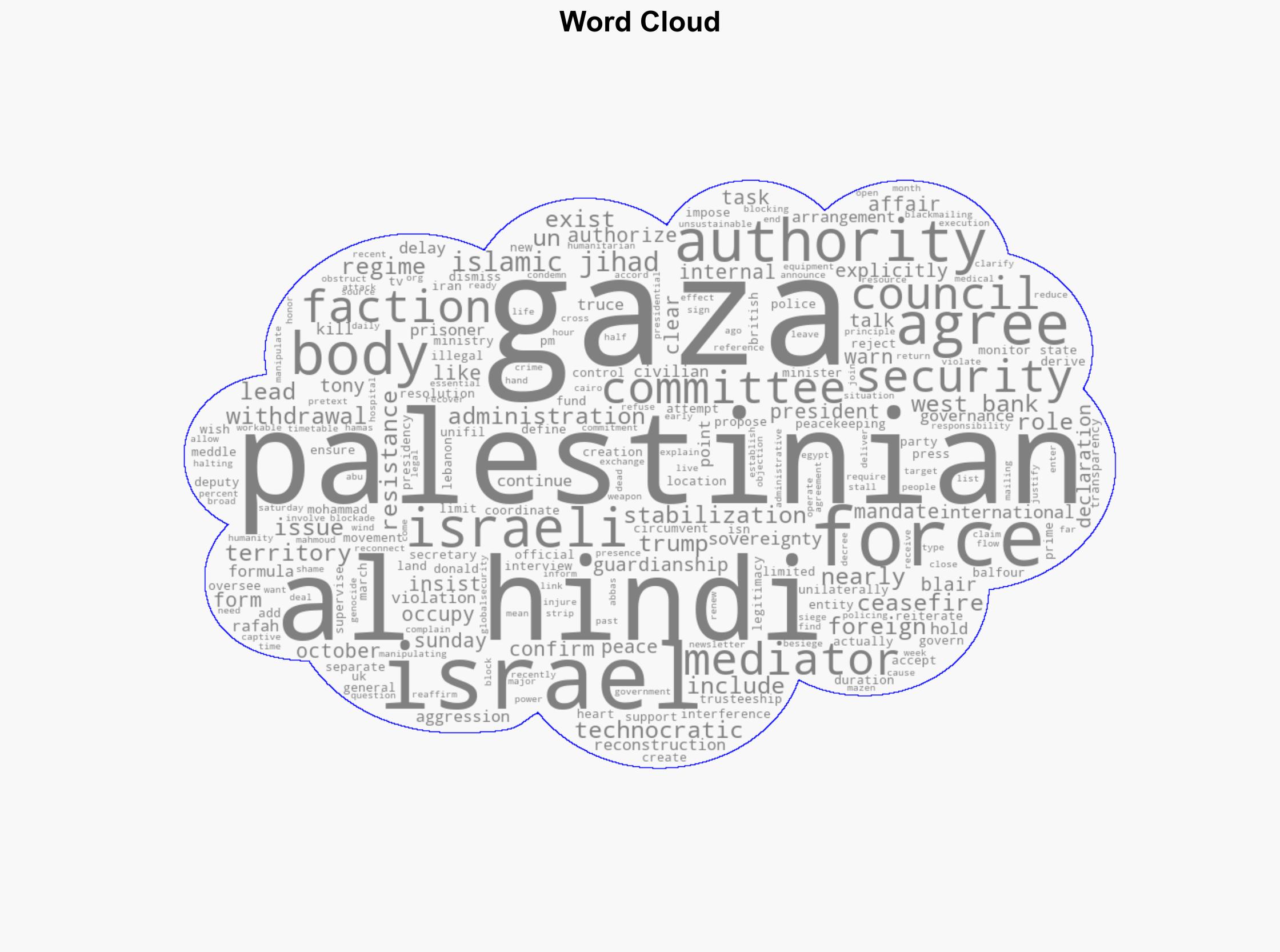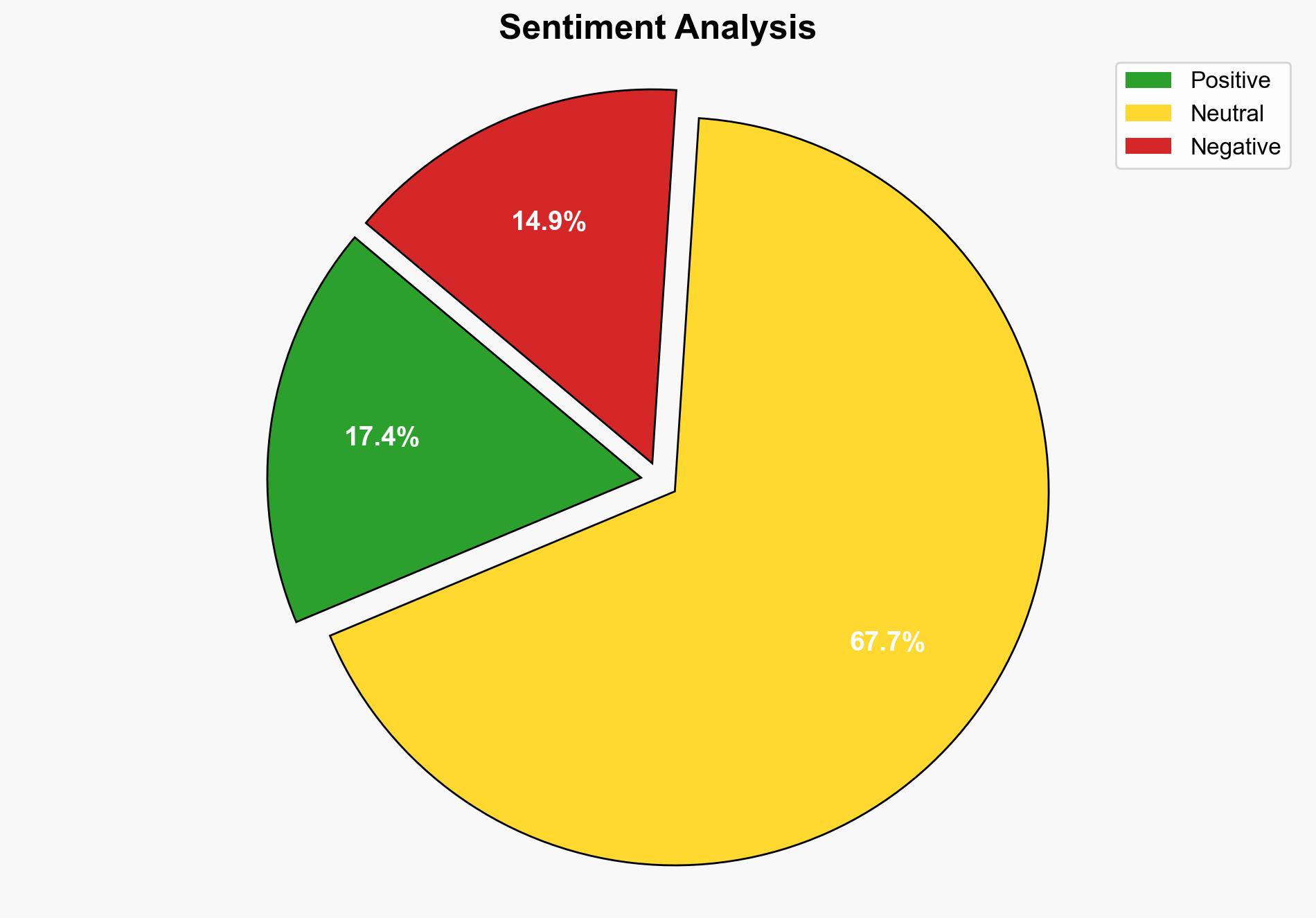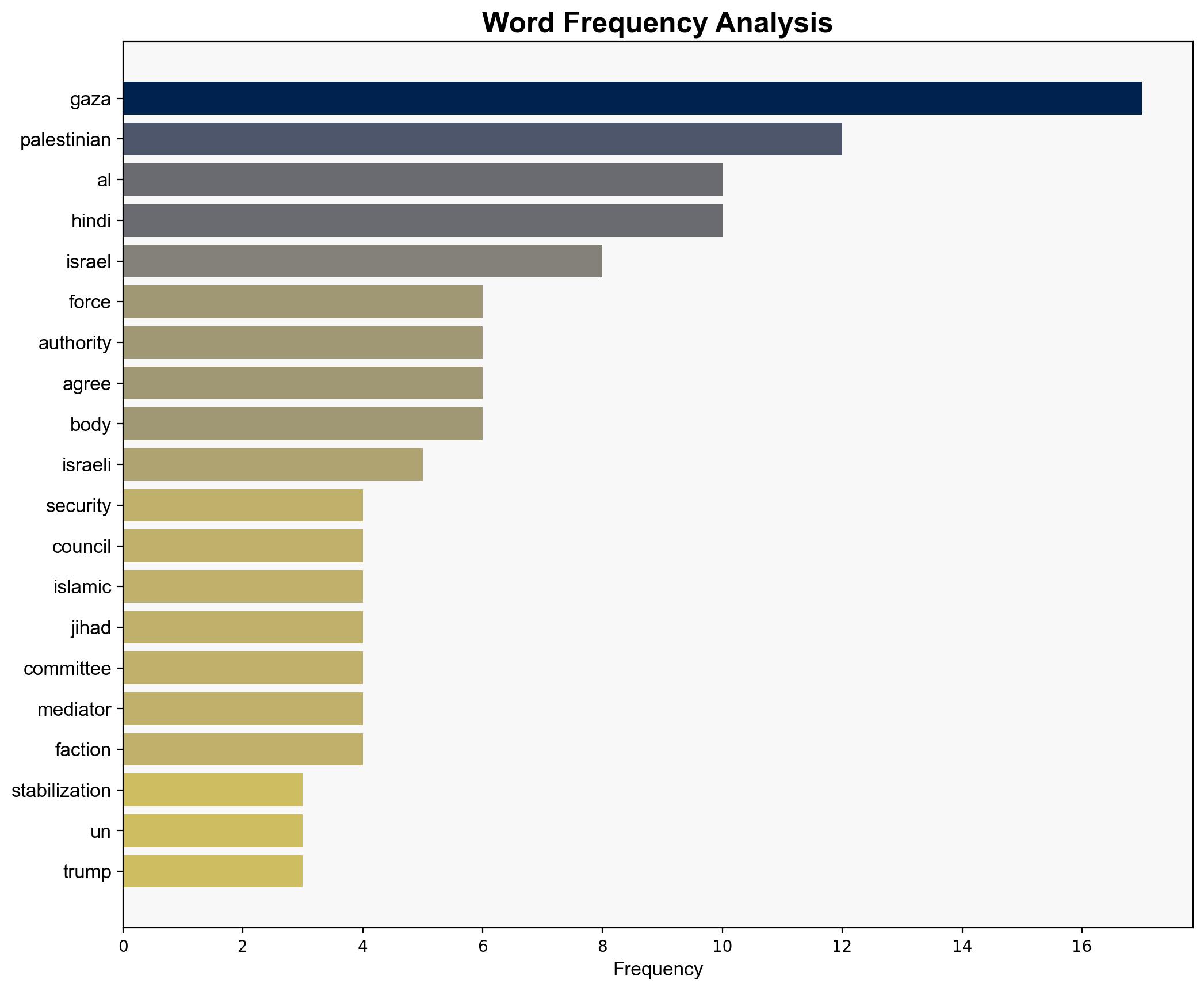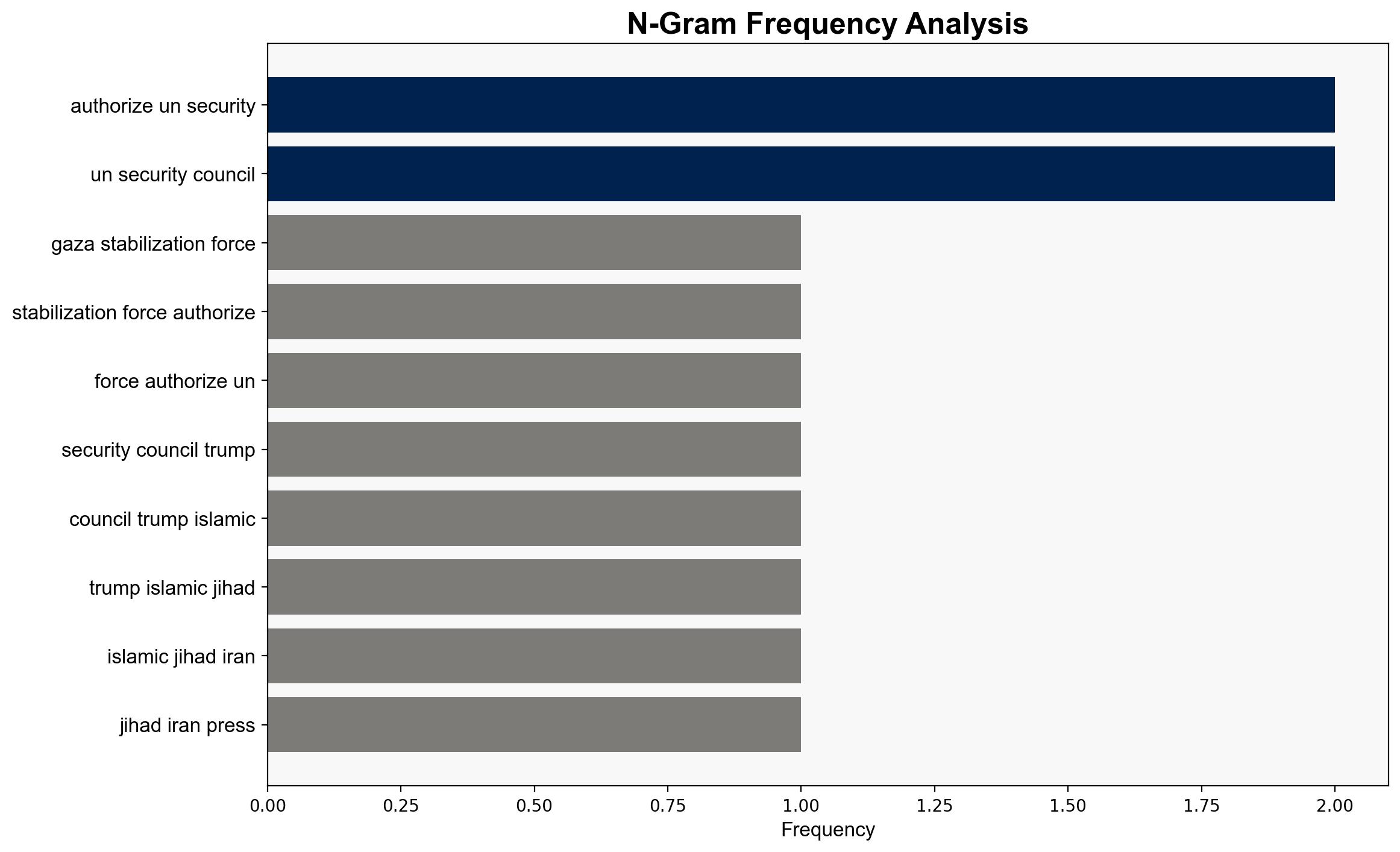Gaza ‘stabilization force’ must be authorized by UN Security Council not by Trump Islamic Jihad – Globalsecurity.org
Published on: 2025-10-27
Intelligence Report: Gaza ‘stabilization force’ must be authorized by UN Security Council not by Trump Islamic Jihad – Globalsecurity.org
1. BLUF (Bottom Line Up Front)
The most supported hypothesis is that the establishment of a stabilization force in Gaza should be authorized by the UN Security Council to ensure international legitimacy and avoid unilateral actions that could exacerbate tensions. Confidence level: Moderate. Recommended action: Advocate for a multilateral approach through the UN to address the situation in Gaza, ensuring that all parties’ concerns are considered and that the force’s mandate is clear and limited.
2. Competing Hypotheses
1. **Hypothesis 1**: The stabilization force in Gaza should be authorized by the UN Security Council to ensure international legitimacy and prevent unilateral actions that could lead to further conflict.
– **Supporting Evidence**: The insistence on a UN mandate aligns with international norms and provides a framework for multilateral cooperation. It also addresses concerns about foreign interference and maintains the sovereignty of Palestinian governance structures.
2. **Hypothesis 2**: The stabilization force could be established through unilateral actions by influential states or coalitions, bypassing the UN Security Council, to expedite deployment and address immediate security concerns.
– **Supporting Evidence**: The urgency of the situation and the potential for rapid deterioration might prompt some actors to bypass lengthy UN processes. Historical precedents exist where coalitions have acted independently when immediate action was deemed necessary.
3. Key Assumptions and Red Flags
– **Assumptions**:
– Hypothesis 1 assumes the UN Security Council can reach a consensus, which may be hindered by geopolitical rivalries.
– Hypothesis 2 assumes unilateral actions can be effective without exacerbating existing tensions or being perceived as illegitimate.
– **Red Flags**:
– Potential for manipulation of the situation by parties with vested interests.
– Lack of clarity on the force’s mandate and duration could lead to mission creep.
– Resistance from local factions to any form of foreign intervention.
4. Implications and Strategic Risks
– **Implications**:
– A UN-backed force could stabilize the region but may face operational challenges due to local resistance.
– Unilateral actions could lead to increased tensions and undermine international diplomatic efforts.
– **Strategic Risks**:
– Escalation of conflict if the force is perceived as biased or illegitimate.
– Potential for increased regional instability if the situation in Gaza deteriorates further.
– Economic and humanitarian impacts due to prolonged conflict and blockade.
5. Recommendations and Outlook
- Engage in diplomatic efforts to secure a UN Security Council resolution authorizing the stabilization force.
- Ensure the force’s mandate is clearly defined and limited to avoid mission creep.
- Consider scenario-based projections:
– **Best Case**: Successful deployment of a UN-backed force leads to stabilization and progress in peace talks.
– **Worst Case**: Unilateral actions lead to increased conflict and regional instability.
– **Most Likely**: Prolonged diplomatic negotiations with incremental progress towards a UN resolution.
6. Key Individuals and Entities
– Mohammad al-Hindi
– Donald Trump
– Tony Blair
– Mahmoud Abbas
7. Thematic Tags
national security threats, regional focus, international diplomacy, conflict resolution




